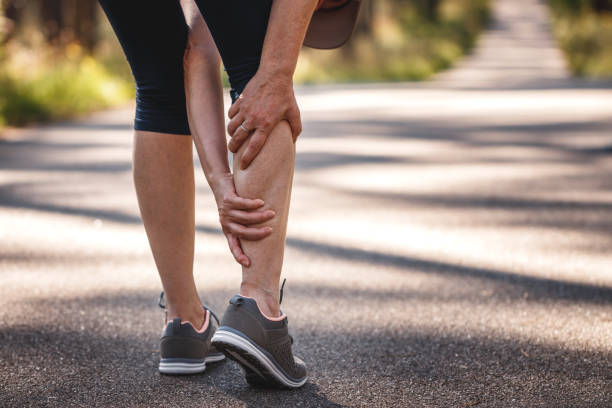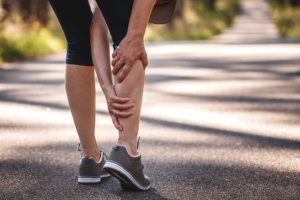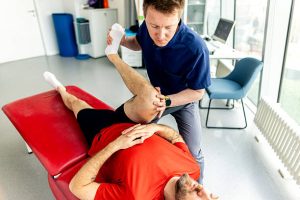When we think about building strength or improving performance, the spotlight usually falls on muscles. However, tendons—the resilient but often overlooked connectors that anchor muscle to bone—play just as critical a role. They are the true force transmitters of the body, translating muscular effort into movement.
Yet, despite their remarkable strength, tendons are surprisingly prone to injury. If you’ve ever felt the sharp sting of tendinitis, struggled with a nagging tendon ache, or experienced the setback of a rupture, you know how disruptive these injuries can be. But why exactly are tendons so vulnerable?
Why Tendons Are Prone to Injury
Tendons are specialized connective tissues made of densely packed collagen fibers, primarily type I collagen. They are designed to withstand high tensile forces, sometimes up to 5–10 times body weight during activities like sprinting or jumping. Despite this, several factors make them prone to injury.
· Overuse and Microtrauma
Repeated stress without sufficient rest leads to microscopic fiber damage. For example, tennis players performing thousands of serves or runners with repetitive strides subject their tendons to cumulative strain. Over time, this microtrauma overwhelms the tendon’s repair capacity, causing inflammation (tendinitis) or degeneration (tendinopathy).
· Sudden Training Load Increases
Research shows that tendons adapt more slowly than muscles to mechanical loading. While muscles strengthen within weeks, tendons may require months to remodel. A rapid spike in training load (intensity, duration, or frequency) can overload tendons before they adapt, increasing injury risk.
· Poor Mechanics and Biomechanics
Faulty technique, such as squatting with knees caving inward or improper lifting form, amplifies shear forces on tendons. Studies indicate poor biomechanics significantly increase the risk of patellar and Achilles tendon injuries, especially in jumping sports.
· Age and Degeneration
With age, collagen cross-linking and vascular supply diminish, reducing elasticity. This makes
tendons stiffer, less hydrated, and more fragile—a key reason older adults are at higher risk of tendon ruptures.
· Systemic and Lifestyle Factors
Diabetes, obesity, smoking, and certain medications (e.g., corticosteroids, fluoroquinolones) impair tendon healing and quality, compounding injury risk.
· Muscle Imbalances and Mobility Restrictions
Overly strong quadriceps paired with weak hamstrings, or tight calf muscles limiting ankle mobility, can unevenly load tendons beyond physiological tolerance.
Common Types of Tendon Injuries
Tendon injuries fall along a spectrum, from acute inflammation to chronic degeneration or structural rupture:
- Tendinitis: Acute inflammation of a tendon, often with pain, tenderness, and swelling. Classic examples include:
- Tennis Elbow (lateral epicondylitis)
- Golfer’s Elbow (medial epicondylitis)
- Jumper’s Knee (patellar tendinitis)
- Achilles tendinitis
- Tendinopathy: Unlike tendinitis, tendinopathy refers to chronic tendon dysfunction with degenerative collagen changes. Current research shows that true inflammation often resolves quickly, whereas tendinopathy may persist due to collagen disorganization and failed healing.
· Tendon Tears:
- Partial Tears: Only some fibers rupture, causing pain and limited function.
- Complete Ruptures: The tendon breaks completely, often accompanied by a popping sensation and a sudden loss of strength, such as in an Achilles tendon rupture.
- Tenosynovitis: Inflammation of the tendon sheath that causes swelling, pain, and crepitus.
De Quervain’s tenosynovitis affecting the wrist tendons is a common example.
Protecting and Strengthening Your Tendons
Although tendon injuries are common, prevention and care strategies are highly effective. Evidence- based approaches include:
· Progressive Loading
Gradual increases in training load allow tendons sufficient time to strengthen and remodel. Eccentric exercises—lengthening a muscle while it tensions the tendon—have strong evidence supporting their effectiveness in treating tendinopathy and improving tendon resilience.
· Biomechanical Correction
Proper movement patterns reduce abnormal tendon stress. Professional coaching on lifting, running, or throwing technique can significantly lower injury risk.
· Warm-up and Cool-down
Dynamic warm-ups enhance tendon elasticity and blood flow, while cooling down and stretching help maintain optimal range of motion.
· Adequate Recovery
Tendons adapt during rest—under-recovery is a major factor in overuse injuries. Rest days and cross-training preserve tendon health.
· Muscle Balance Training
Strengthening antagonist and stabilizing muscle groups distributes forces evenly across tendons, reducing peak stresses that cause injury.
· Lifestyle and Health Management
Maintaining a healthy weight, managing metabolic diseases, stopping smoking, and avoiding harmful medications protect tendon integrity.
Final Word
Tendons may not be glamorous, but they are essential. They quietly bear the high forces of every stride, swing, and lift. Neglect them, and you risk painful, chronic injuries that limit activity. Care for them, and you protect lifelong mobility.
Understanding why tendons are vulnerable—and adopting strategies to protect and strengthen them—is the surest way to stay active and pain-free for decades. If pain or dysfunction arises, consult a healthcare professional promptly for diagnosis and treatment. Early intervention is key to preventing lasting damage.
If desired, references for the key studies and reviews mentioned here can be provided for deeper reading.







